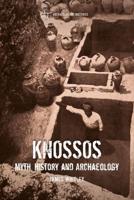Publisher's Synopsis
This volume explores the landscape settings of megalithic chambered monuments in Wales. Set against a broader theoretical discussion on the significance of the landscape, the authors consider the role of visual landscapes in prehistory, meanings attached to the landscape, and the values and beliefs invested in it. Wales is rich in Neolithic monuments, but the general absence of certain classic monumental forms found in the rest of Britain and Ireland, such as causewayed enclosures, henges, and cursus monuments, seems to have marginalised the Welsh record from many wider discussions on the Neolithic. Instead of seeing Wales as an area which lacks many of these 'classic' components, Cummings and Whittle argue that Wales has its own unique and individual Neolithic which is simply different from the Neolithic found further to the east. It is suggested that this difference may relate to an essentially mobile existence, with strong links back to the Mesolithic period. The authors present three detailed case studies, examining the settings of sites in south-west, north-west and south-east Wales. They outline the history of research for each region, including the previous classification of the monuments and any excavations, and describe the specific landscape settings of the monuments. They assess the significance of a variety of landscape features which would have been visible from the monuments, in particular emphasising the mythological and symbolic significance of the sea, rivers and mountains. An illustrated inventory of sites completes the volume.










